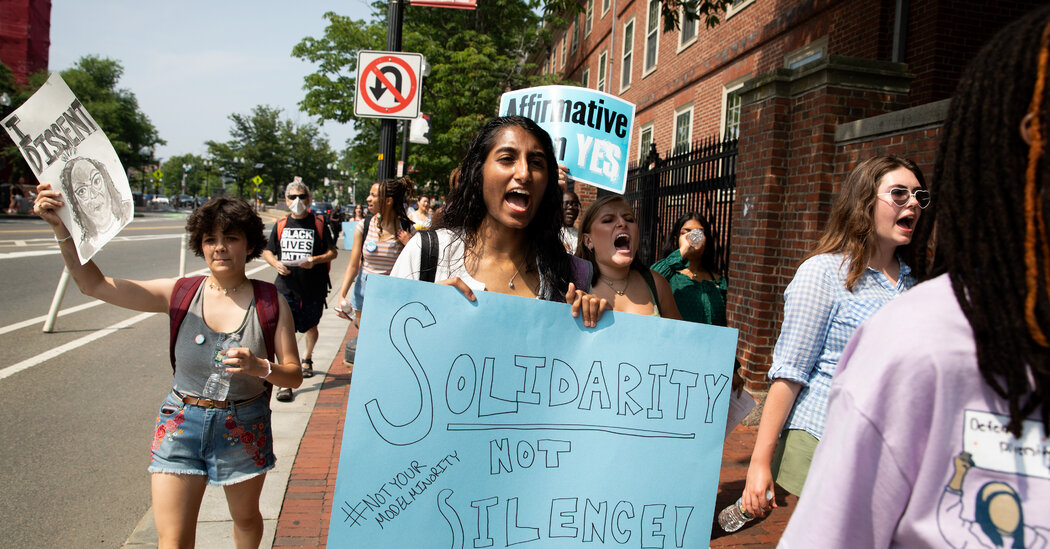What to Know About the Kaiser Permanente Strike
Kaiser Permanente has an enormous footprint in California.
The organization, based in Oakland, is the largest private employer in the state, operating 36 hospitals and more than 500 medical office buildings in California. It provides coverage to roughly half of all Californians with private health insurance.
So it’s an especially big deal for the state that Kaiser employees have begun what labor leaders are calling the biggest health care strike in recent U.S. history. The three-day action includes more than 75,000 workers in eight states and the District of Columbia, with more than 60,000 of those workers in California.
The strike, which includes laboratory workers, pharmacy technicians, phlebotomists and housekeepers, could cause delays for patients who are trying to get medical appointments, lab results or prescriptions.
Doctors and many nurses are not involved in the strike, but Kaiser officials warned that even so, some nonurgent procedures might be postponed, some clinic hours might be reduced and phone waiting times could be lengthy. Some locations have also closed temporarily or are operating with reduced hours. Kaiser has said that it is keeping all of its hospitals and emergency departments open.
California’s high cost of living and growing income inequality have helped embolden workers to take more job actions: Housekeepers, Los Angeles city workers, McDonald’s employees, dockworkers, and Hollywood writers and actors all went on strike this year.
Kaiser Permanente workers are calling for higher wages and higher staffing levels, saying that staffing shortages at their hospitals and clinics were making it impossible to provide adequate care to patients.
Edward Lopez-Matus, a Kaiser medical assistant on the picket line Wednesday morning, told me that he was often assigned to help two doctors instead of one, because his team was so short staffed. Stretching workers that thin makes patients wait longer and increases the chance of making mistakes, he said.
“That’s not the care our patients need,” said Lopez-Matus, who has worked for Kaiser Permanente for seven years. “Our patients need our undivided attention.”
He and hundreds of other health care workers picketed outside a medical center in San Francisco. Drivers on Geary Boulevard honked as the strikers, many wearing purple and yellow, flooded the sidewalks and medians, cheering and rattling tambourines.
Lopez-Matus told me that to make ends meet, he drives for Uber 40 hours a week, on top of his full-time job at a Kaiser family practice clinic in San Francisco.
“My entire paycheck goes to rent,” said Lopez-Matus, who lives in Daly City, just outside San Francisco, and has two teenage children. “It’s ridiculous.”
Timothy Regan, a clinical health educator for Kaiser Permanente in San Francisco, said he came out to protest on Wednesday because he thought the health system’s executives weren’t bargaining in good faith with the union. He said he was grateful for his job, which he’s held for 25 years, and felt that he needed to ensure good working conditions for the next generation.
“We want that collaborative good faith partnership, and we wanted it months ago,” Regan said. “Many of us are surprised, actually, that it got to this point.”
Kaiser Permanente officials said that they were working with union leaders to resolve the strike and that there had already “been a lot of progress.”
“We remain committed to reaching a new agreement that continues to provide our employees with market-leading wages, excellent benefits, generous retirement income plans, and valuable professional development opportunities,” the organization said in a statement on Wednesday.
Where we’re traveling
Today’s tip comes from Lauren Batalias, who recommends Auburn, a gold rush town about 30 miles northeast of Sacramento:
“Auburn is an incredible hidden gem in the Sierra Foothills. It has miles and miles of hiking and mountain biking trails surrounding a beautiful blue-green river. It’s known as ‘the endurance capital of the world,’ as a lot of long-distance runs and runners converge here. The town is packed with artisanal shops, running stores, music shops, bookstores, galleries, coffee bars, restaurants, farmers’ markets, yoga studios and the oldest post office west of the Mississippi. There is a lot of gold rush infrastructure still remaining. It’s an incredible confluence of the Old West, healthy living, incredible nature, and a coffee and brewery culture. Auburn is truly special.”
Tell us
We’re looking to feature more of your favorite places to visit in California. Send us suggestions for day trips, scenic outlooks, hikes and more. Email your suggestions to [email protected].
And before you go, some good news
A new program will award federal grants to 10 Bay Area cities to plant and maintain trees as a guardrail against climate change and extreme heat.
The grants, awarded by the U.S. Forest Service under the Inflation Reduction Act, total $1 billion, including $8 million to Oakland and $6.6 million to San Jose, The Mercury News reports.
Some cities will designate the money for planting trees on city streets, while others will focus on sowing private yards. The recipients were chosen after being deemed by the federal government as disadvantaged and heavily affected by climate change.
Tree cover can provide essential shade and cooling on hot summer days and during heat waves. But trees are often sparse in lower-income areas and communities of color, in part because of redlining policies from the 1930s that excluded minorities from key services and infrastructure.
Beyond cooling, more plantings can also help reduce energy use by replacing the need for air-conditioning and can remove pollution from the air.
Thanks for reading. I’ll be back tomorrow. — Soumya
P.S. Here’s today’s Mini Crossword.
Maia Coleman and Briana Scalia contributed to California Today. You can reach the team at [email protected].
Sign up here to get this newsletter in your inbox.


